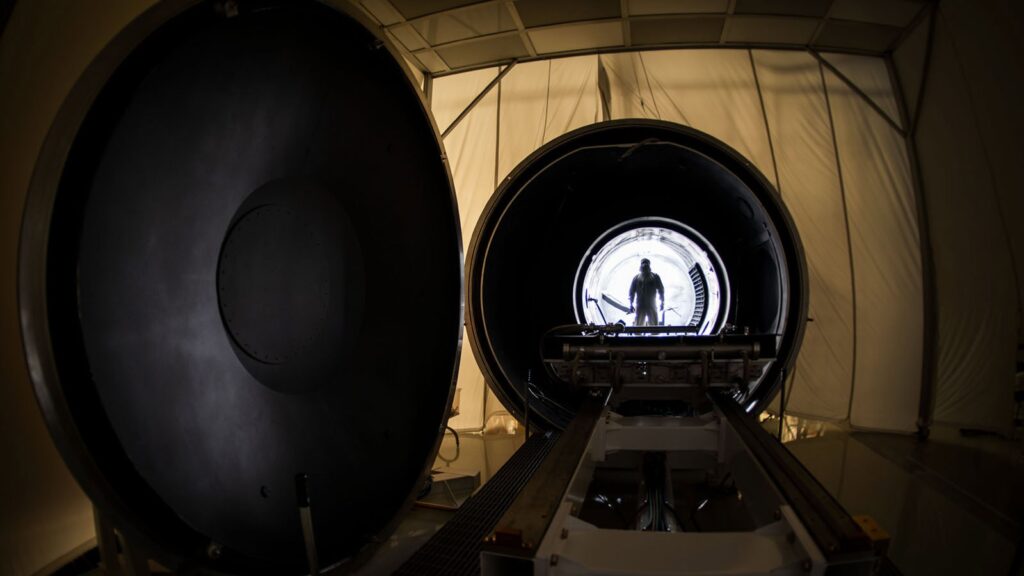For decades, SDL has developed extensive environmental testing and validation capabilities for space, airborne, and miniaturized systems. This March 26 photo captures one of several chambers used at SDL for testing and calibration. (Credit: Allison Bills/Space Dynamics Laboratory).
NORTH LOGAN – A new contract won recently by the Utah State University Space Dynamics Lab will support a new NASA-based instrument as it continues to gather information to add to a 40-year record of the solar radiation entering Earth’s atmosphere.
James Peterson of the Space Dynamics Lab said the new instrument — named Libera — will first measure the total incident radiation from the sun that’s coming into the earth.
“It also measures the portion of that that’s reflected back out into space and then what makes it into our earth environment is absorbed and converted to heat, then that heat is re-emitted back out into space as infrared radiations,” Peterson explains. “So, it measures the balance of those three key components that drive our climate and our temperatures here on earth.”
Peterson says the work the SDL will do in Logan is to provide essential ground calibration work on Libera to ensure the success of this state-of-the-art instrument as it flies into space to do its work.
“The critical part of its success,” he continues, “will be our ability to calibrate that so we know exactly how much radiants we’re measuring in each of those key components from the incident reflected and emitted radiation so that balance can be calculated by the NASA scientists.”
Peterson says a key to understanding how our climate adjusts is determining the difference between how much energy enters the earth from the sun and how much energy leaves it.
Libera will fly on the joint Polar Satellite System-3 in 2027. Peterson said SDL’s involvement in the calibration process is built into the schedule for late-2024.
Free News Delivery by Email
Would you like to have the day’s news stories delivered right to your inbox every evening? Enter your email below to start!

